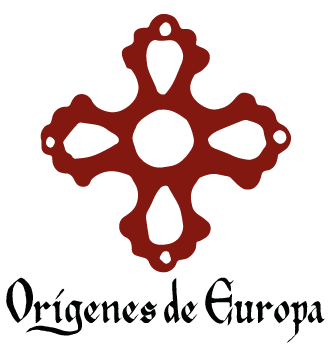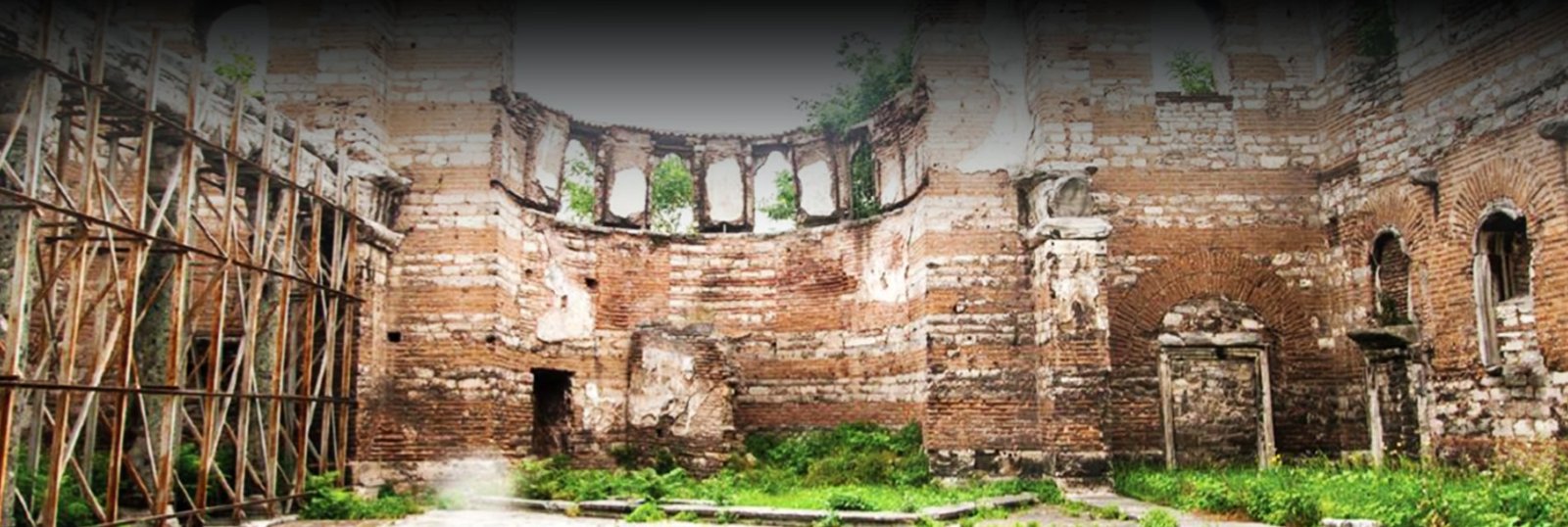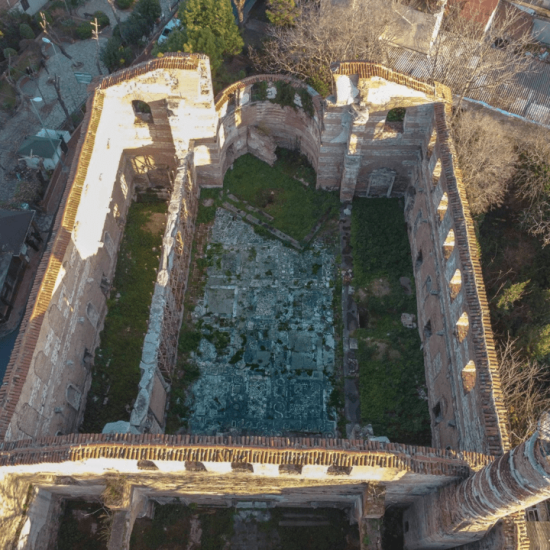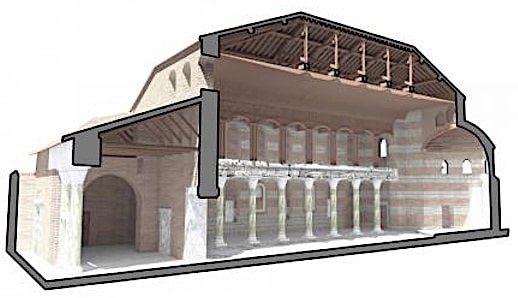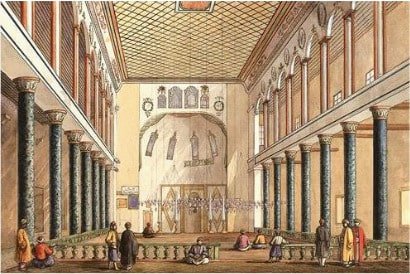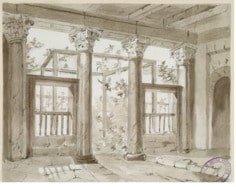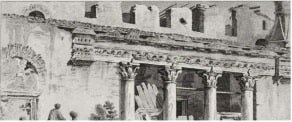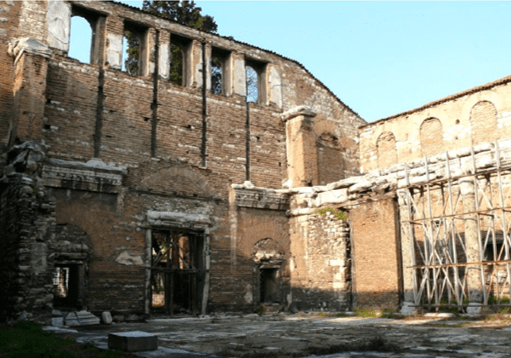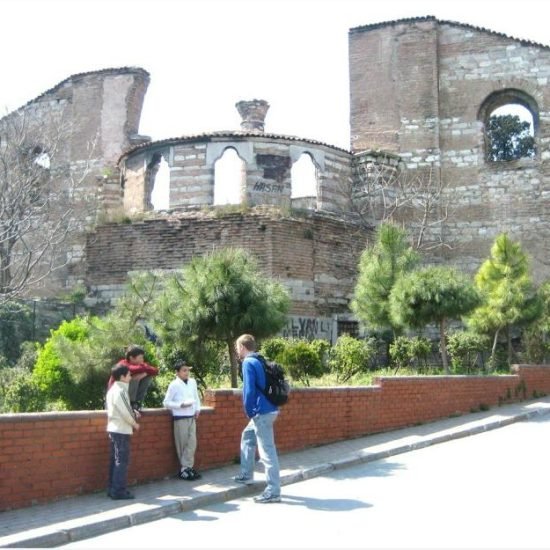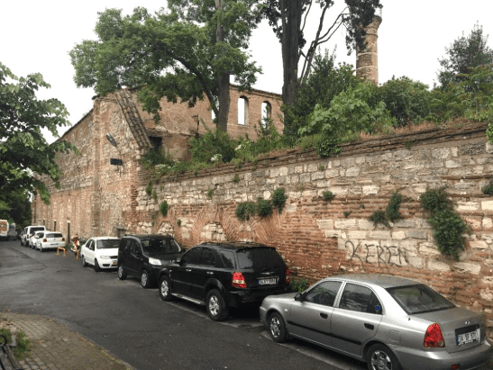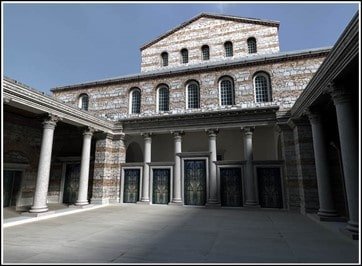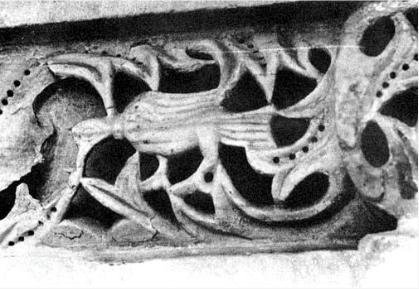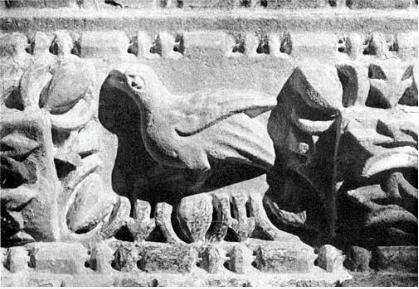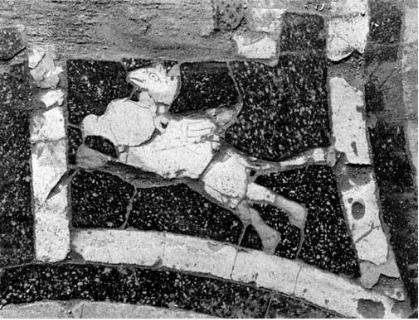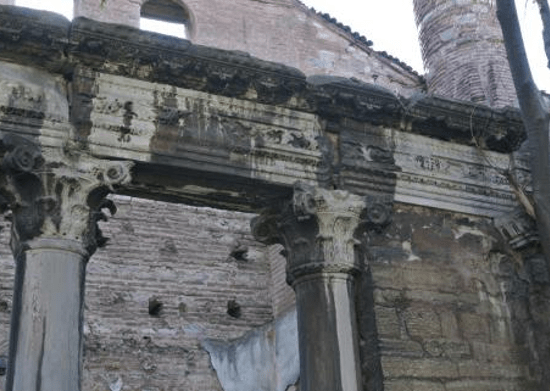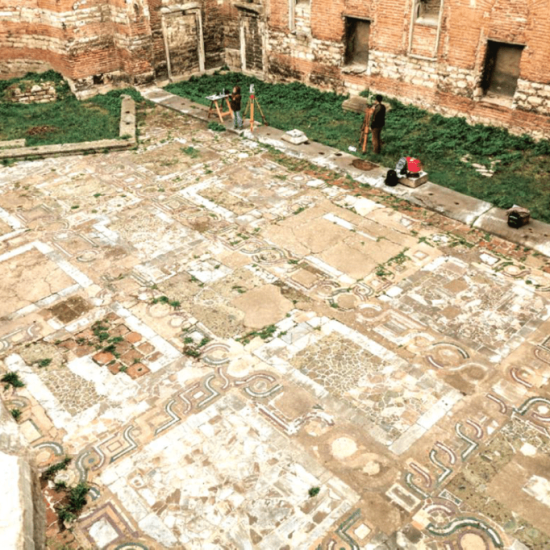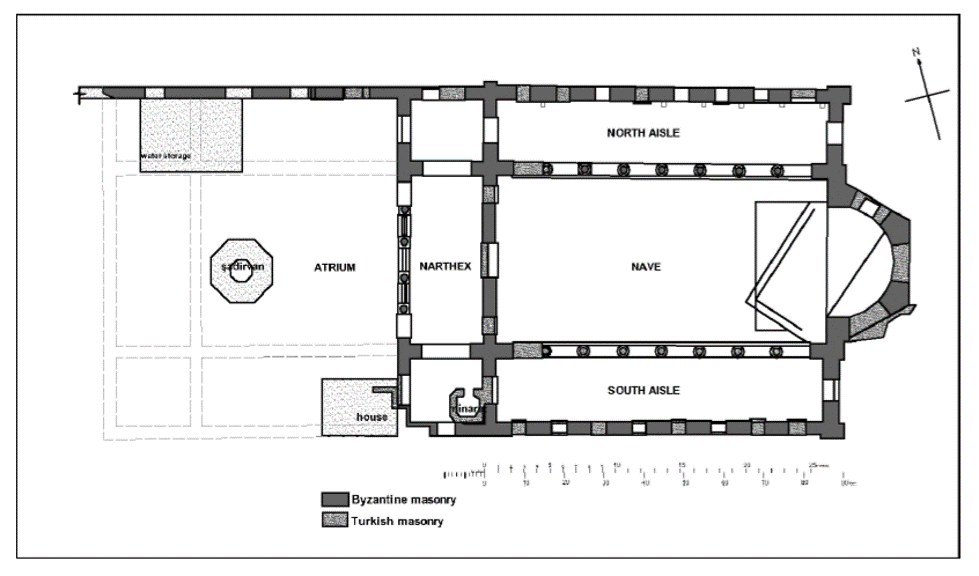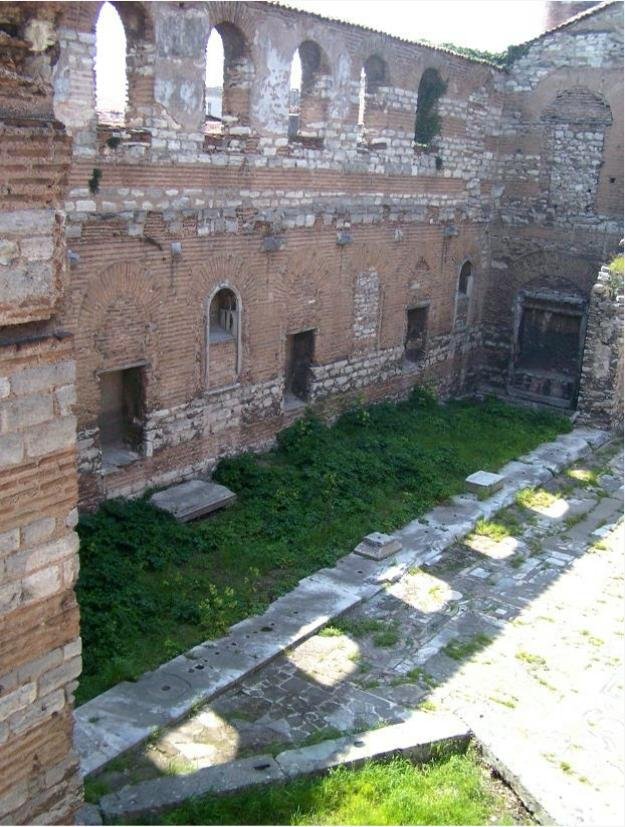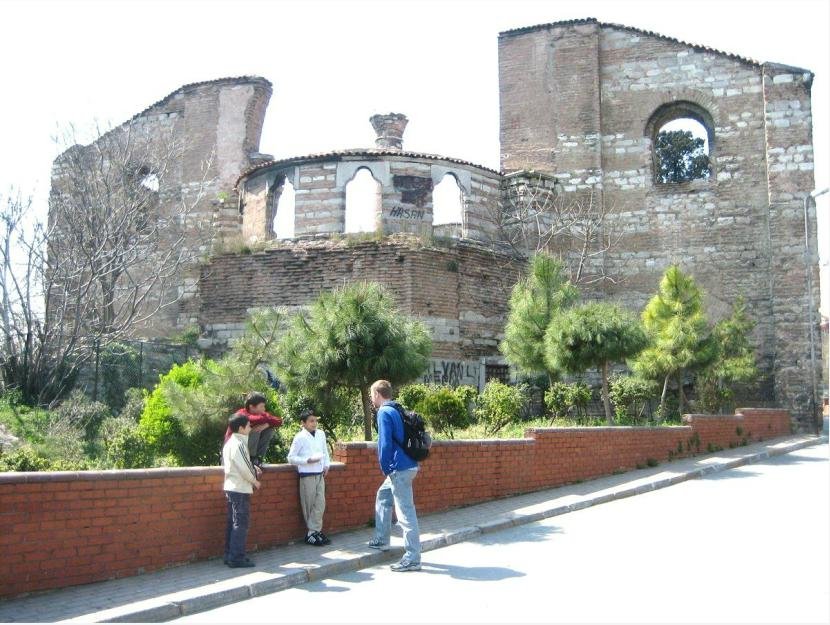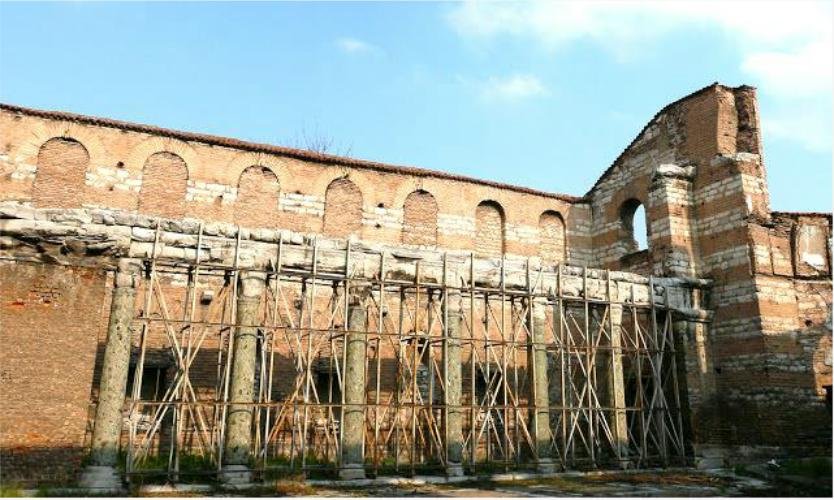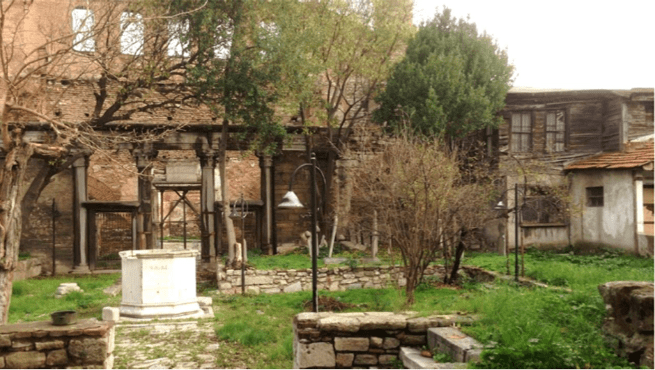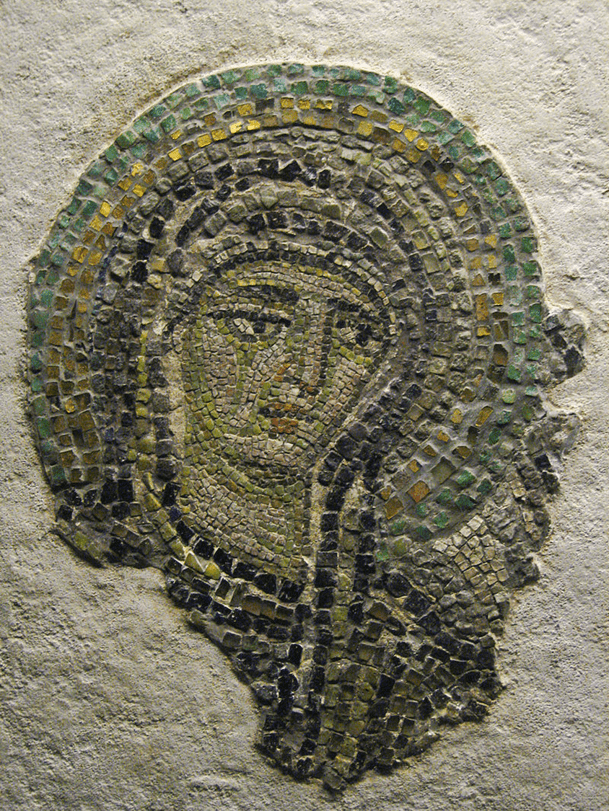Monastery of Stoudios
per person
The monastery of Stoudios was founded in 453 in the southwest of Constantinople (Mango, Cyril. ‘The Date of the Studius Basilica at Istanbul’. Byzantine and Modern Greek Studies 4, no. 1, 1 January 1978: 115–22), not far from the Marmara Sea It is considered one of the first examples of the religious architecture of Eastern Roman Empire and its main church is accepted as the oldest remaining religious building in Istanbul. The monks that inhabited it were referred to as Stoudites (or Studites), and they were well known by their laws and customs that many important monasteries toke as model. The Stoudites were, in fact, repeatedly driven from the city for their strict orthodox beliefs during the various religious controversies. As regards the intellectual life of the monastery in other directions, it is especially celebrated for its famous school of calligraphy which was established by Theodore the Studite, the abbot to whom the monastery owes most of its fame. In the eighth and eleventh centuries, the monastery was the centre of Byzantine religious poetry; a number of the hymns are still used in the Orthodox Church. Three of the Stoudite monks rose to become the ecumenical patriarchs, and after the tenth century, while Stoudios served as a place of both exile and sanctuary during the imperial conflicts for notable historical figures (Giritlioğlu, Dilara Burcu. ‘An Urban Node in the Ritual Landscape of Byzantine Constantinople: The Church of St John the Baptist of the Stoudios Monastery’. Master Thesis, Middle East Technical University, 2019: 68).
Stoudios Monastery was built at the south-western part of Constantinople (today Istanbul) near the Golden Gate. It is one of the oldest churches in Constantinople/Istanbul still standing. It was founded in the mid 5th century by the patrician Flavius Studius and was dedicated to St. John the Baptist (the Forerunner). By the end of the 13th century, it was restored and in the 14th century it continued to one of the most prominent monastic communities in the Byzantine capital. During the time of Theodore of Stoudios (759-826) and in the 9th century, the monastery was the intellectual center of the Byzantine capital where many important manuscripts were transcribed.
The monastery was plundered by the Crusades in 1294 – when it was turned into a pasture in the years from 1204 to 1293 – and it was, furthermore, damaged by the severe earthquakes in 542, 1296 and 1509. Stoudios was converted into a mosque (Imrahor Ilyas Bey Cami) by Bayezid II in the early 15th century and reconstructed after the 1784 fire and 18-19th century earthquakes. During the Ottoman era it was converted into a mosque and underwent extensive changes. An earthquake in 1894 destroyed the monastery. In 1907-1909, the Russian Archaeological Institute in Constantinople excavated the monastery partially and revealed the opus sectile pavement, the crypt under the apse and burials in the south aisle.
The remaining part used as a mosque was completely abandoned after the fire in 1920 (Kucukdogan, Bilge, Joseph Kubin, and Ali Ihsan Unay. ‘Seismic Assessment of Monastery of Stoudios (Imrahor Mosque) in Istanbul’. Advanced Materials Research 133–134, 2010: 722-3).
FORMAL ANALYSIS
The Studios church is a 5th-century three-aisled basilica with an atrium and a three-bay narthex with an apse at its east end. The main part of the basilica included green marble columns and a rich decoration. The pavement was made in the opus sectile technique; it was decorated with animals and mythological scenes dated in the 11th century. Although a miniature dated in 1100 depicts a semi-round form, the apse had externally a polygonal form and in conformity with the Late Antique practice it contained a synthronon. Under the apse, were kept the relics of the monastery in a cruciform crypt. To the southeast of the building is a cistern perhaps dating to the 5th century which was destroyed in 1970 in a fire. Finally, a small chapel (now lost) was added in the Late Byzantine period.
The only part of the monastery surviving into the 20th century was the Cathedral of St. John. This is a 5th-century basilica, later converted into a mosque. During the last century, the ruins of the monastery complex were looted by local inhabitants to repair their houses, while the magnificent 13th century pavement still lies open to elements «and disappears slowly but steadily“ (Istanbul monastery to become mosque. Hurriyet. 26 November 2013. Retrieved 26 November 2013). Notwithstanding this, the degree of preservation of the initial construction of the church is rare for Constantinople. The standing structure’s building technique is the opus mixtum, alternating three courses of stone with five courses of brick.
The church proper was preceded by a narthex and a square-shaped portico and atrium. The rest of the monastery complex was located along the south side of the church’s atrium (Giritlioğlu, 2019: 79-80). The church proper was a two-storey structure with a ground floor and the galleries above. The three-aisled basilica was covered with a timber roof. The ground floor was divided into three bays; the nave and two flanking aisles (Giritlioğlu, 2019: 83).
Sculptural remains are still visible in some sections of the navy walls, as well as in the narthex façade.
- MONASTERY OF STOUDIOS Stoudios Basilica, plan and suggested reconstruction of the atrium, Giritlioğlu, Dilara Burcu, 2019: 182
- MONASTERY OF STOUDIOS © PHOT. https://travelatelier.com/blog/monastery-alacahan/
- STOUDIOS BASILICA, RECONSTRUCTIVE HYPOTHESIS ON A 3D MODEL © StudioBerlucchi, http://www.studioberlucchi.it/en/portfolio/monuments/imrahor-ilyas-bey-camii-istanbul.html
- STOUDIOS BASILICA, RECONSTRUCTIVE HYPOTHESIS ON A 3D MODEL © StudioBerlucchi, http://www.studioberlucchi.it/en/portfolio/monuments/imrahor-ilyas-bey-camii-istanbul.html
- STOUDIOS BASILICA, RECONSTRUCTIVE HYPOTHESIS ON A 3D MODEL © StudioBerlucchi, http://www.studioberlucchi.it/en/portfolio/monuments/imrahor-ilyas-bey-camii-istanbul.html
- VIEW OF THE APSE FROM THE NAVE, AFTER THE ROOF COLLAPSED, 1920 © PHOT. Köse, Fatih, 2012: 37
- WATERCOLOR DEPICTS IMRAHOR MOSQUE (STOUDIOS MONASTERY), 19TH CENTURY, BY ANTONIOS MANARAKIS © PHOT. Giritlioğlu, 2019: 172
- WATERCOLOR DEPICTS THE NARTHEX ENTRANCE, 1830, BY CHARLES FELIX MARIE TEXIER © PHOT. Giritlioğlu, 2019: 171
- BOTTOM RIGHT IMG: DRAWING OF THE REMAINS OF THE STOUDIOS MONASTERY, SHOWING THE NARTHEX WALL FROM THE ATRIUM, 1822, BY AUGUSTE DE CHOISEUL-GOUFFIER © PHOT. Giritlioğlu, 2019: 170
- STOUDIOS MONASTERY, INTERNAL VIEW OF THE APSE FROM THE NAVE © PHOT. Esra Kudde, 2014, Giritlioğlu, 2019: 190
- STOUDIOS MONASTERY, INTERNAL VIEW OF THE WESTERN WALL OF THE NAVE © PHOT. Caner Cangül, 2013, Giritlioğlu, 2019: 196
- STOUDIOS MONASTERY, INTERNAL VIEW OF THE SOUTH-AISLE OF THE CHURCH © PHOT. Jesse W. Torgerson, Wesleyan University 2007, Giritlioğlu, 2019: 194
- STOUDIOS MONASTERY, EXTERNAL VIEW OF THE SOUTH-AISLE OF THE EASTERN WALL, AND THE APSE © PHOT. Caner Cangül, 2013, Giritlioğlu, 2019: 191
- STOUDIOS MONASTERY, INTERNAL VIEW OF THE NORTH-AISLE, AND COLUMNS © PHOT. Jesse W. Torgerson, Wesleyan University 2007, Giritlioğlu, 2019: 191
- STOUDIOS MONASTERY, EXTERNAL VIEW OF THE ATRIUM NORTHERN WALL, 2018 © PHOT. Giritlioğlu, 2019: 183
- STOUDIOS MONASTERY, VIEW OF THE NARTHEX, AND şARDIVAN FROM THE ATRIUM © PHOT. Peter Kenyon, 2014, Giritlioğlu, 2019: 184
- VIRTUAL RECONSTRUCTION OF THE MONASTERY © PHOT. http://www.byzantium1200.com/studion.html
- DETAIL OF ENTABLATURE ON THE NARTHEX FAÇADE © PHOT. German Archaeological Institute, Nicholas V. Artamonoff Collection , Giritlioğlu, 2019: 184
- DETAIL OF DENTILS ON THE CORNICE OF THE NARTHEX FAÇADE © PHOT. German Archaeological Institute, Nicholas V. Artamonoff Collection , Giritlioğlu, 2019: 184
- PAVEMENT DETAIL OF A FLYING GRIFFON, 1929 © PHOT. German Archaeological Institute, Nicholas V. Artamonoff Collection , Giritlioğlu, 2019: 184
- STOUDIOS MONASTERY, COLUMN CAPITALS © PHOT. StudioBerlucchi http://www.studioberlucchi.it/en/portfolio/monuments/imrahor-ilyas-bey-camii-istanbul.html
- STUDIOS MONASTERY, OPUS SECTILE FLOOR OF THE NAVE, © PHOTS. Ahmet Mutlu, 2013, Giritlioğlu, 2019: 184, 200
- STUDIOS MONASTERY, OPUS SECTILE FLOOR OF THE NAVE, © PHOTS. Ahmet Mutlu, 2013, Giritlioğlu, 2019: 184, 200
- Based on Bardill, Constantine, 254; Berger, Untersuchungen, 197; Crow, The Water Supply, Berger, «Regionen und Strassen im fruhen Konstantinopel,» 353, Giritlioğlu 2019: 167
- VIRGIN, STUDIOS MONASTERY IN CONSTANTINOPLA, LATE 10TH CENTURY, BENAKY MUSEUM © PHOT. Sharon Mollerus
Tour Location
Monastery of Stoudios
| Other monuments and places to visit | Pammakaristos Church (Istanbul); Lips Monastery (Istanbul); Chora Church (Istanbul). Koca Mustafa Mosque (Andreas en te Krisei nunnery) |
| Natural Heritage | The city of Istanbul, along its Marmara Sea coastline. |
| Historical Recreations | |
| Festivals of Tourist Interest | |
| Fairs | |
| Tourist Office | |
| Specialized Guides | |
| Guided visits | |
| Accommodations | Accommodations in the neighborhood of Samatya, as well as in the rest of the city of Istanbul. |
| Restaurants | Restaurants in the neighborhood of Samatya. |
| Craft | |
| Bibliography | Hatlie, Peter. The Monks and Monasteries of Constantinople, Ca. 350-850. Cambridge University Press, 2007. Giritlioğlu, Dilara Burcu. ‘An Urban Node in the Ritual Landscape of Byzantine Constantinople: The Church of St John the Baptist of the Stoudios Monastery’. Master Thesis, Middle East Technical University, 2019. |
| Videos | |
| Website |
| Monument or place to visit | Monastery of Stoudios, more fully Monastery of Saint John the Forerunner“ at Stoudios |
| Style | Remains of Late Antique local masonry structures, later medieval addictions. |
| Type | Monastic complex. |
| Epoch | 5th century – 1453. |
| State of conservation | Abandoned. Recently restored. |
| Degree of legal protection | |
| Mailing address | Kocamustafapaşa, Kilise Sk. No:8, 34098 Fatih/İstanbul, TR. |
| Coordinates GPS | 40°59′46″N 28°55′43″E |
| Property, dependency | |
| Possibility of visits by the general public or only specialists | Currently not accessible. |
| Conservation needs | Yes |
| Visiting hours and conditions | |
| Ticket amount | |
| Research work in progress | A restoration project, initiated by the Istanbul Governorship Investment Monitoring Coordination Directorate in 2012, was carried out in 2019 with the approval of the Conservation Board. In 2021, a restoration training study, the Medart Turkey Imrahor Mosque Restoration Cooperation Project , is carried out with a focus on mosques by the General Directorate of Foundations and the Italian Association of Restoration Firms. |
| Accessibility | Easily to walk on foot, by car or by bus. Entry is currently forbidden. |
| Signaling if it is registered on the route | Not yet registered. |
| Bibliography | Mango, Cyril. ‘The Date of the Studius Basilica at Istanbul’. Byzantine and Modern Greek Studies 4, no. 1 (1 January 1978): 115–22. Kucukdogan, Bilge, Joseph Kubin, and Ali Ihsan Unay. ‘Seismic Assessment of Monastery of Stoudios (Imrahor Mosque) in Istanbul’. Advanced Materials Research 133–134 (2010): 721–26. Giritlioğlu, Dilara Burcu. ‘An Urban Node in the Ritual Landscape of Byzantine Constantinople: The Church of St John the Baptist of the Stoudios Monastery’. Master Thesis, Middle East Technical University, 2019. Okcuoglu, Tarkan, Esra Kudde, and Nicholas Melvani. Stoudios Monastery in Istanbul: History, Architecture and Art. Koç University Press, 2022. Wolfgang Müller-Wiener: Bildlexikon zur Topographie Istanbuls. Byzantion, Konstantinupolis, Istanbul bis zum Beginn des 17. Jahrhunderts. Wasmuth, Tübingen 1977 Olivier Delouis: Saint-Jean-Baptiste de Stoudios à Constantinople. La contribution d’un monastère à l’histoire de l’Empire byzantin (v. 454–1204). Dissertation Université Paris-I 2005. |
| Videos | Youtube |
| Information websites | wikipedia.org byzantium1200.com |
| Location | Located near the Propontis (Marmara Sea) in the section of Istanbul called Samatya, today's Koca Mustafa Paşa. |
